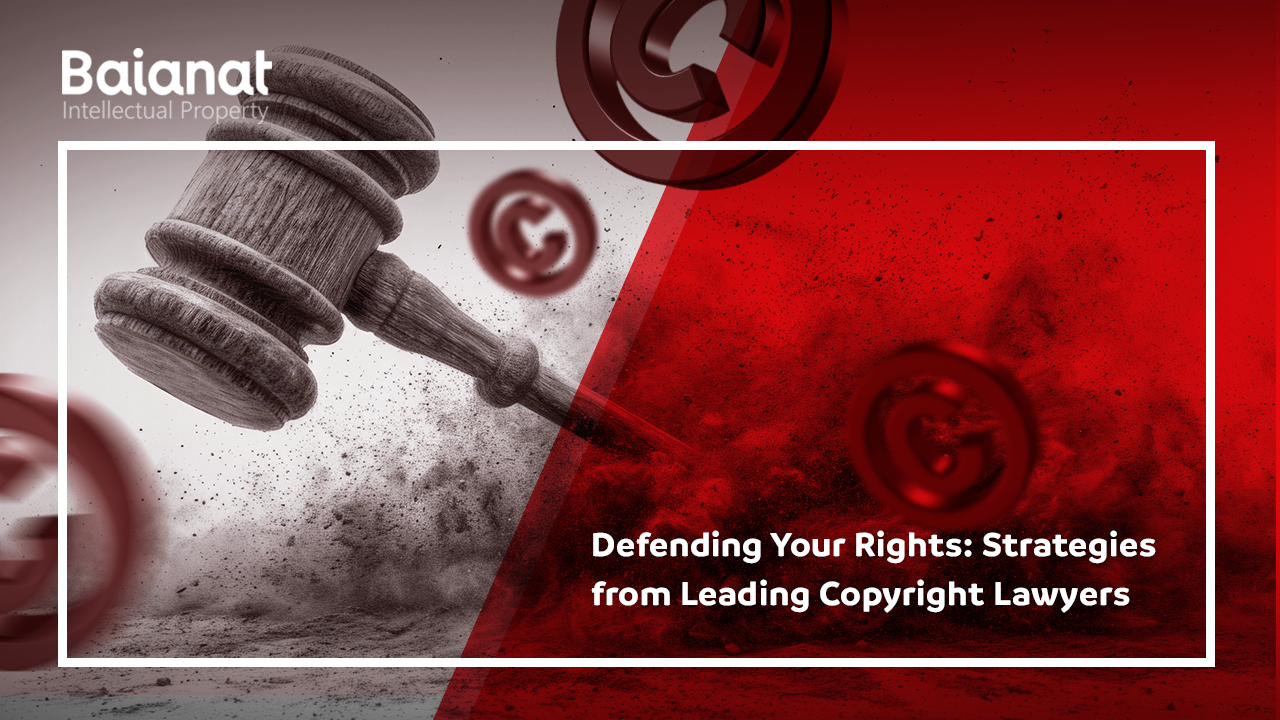The world is going digital and the protection of intellectual property needs an increasing effort, which creates a need for understanding the intellectual property law in cyber security to overcome infringements, violations and fraud issues.
Intellectual property rights “IPR” refer to the laws that offer the owner exclusive rights to protect his unique creation of the mind, such as 2D and 3D designs, literary work, inventions, etc. and prevent others from using it without his permission.
As the world becomes increasingly digital, Intellectual property protection becomes even more important as online content can be easily copied, shared, and sold without consent. In this article, we will discuss the different types of IP protection, including copyrights, trademarks, and patents, and how they apply to the world of cyber security.
We will also dig deeper into the various issues that arise in cyberspace, such as copyright infringement, software piracy, and cybersquatting, and the laws and remedies in place to protect IP rights in the digital world.
Intellectual Property Law In Cyber Security
cyberspace becomes a prominent business platform, which has made intellectual property law in cyber security an increasingly relevant topic, where IP has become an increasingly valuable asset for businesses and organizations, as it includes things like software copyrighting, patented inventions, trademarks, and trade secrets.
Different forms of IP rights are often violated through activities such as software piracy, cybersquatting, and trademark infringement. Cybersecurity is the practice of protecting these digital assets from unauthorized access, use, disclosure, disruption, modification, or destruction.
The major concern in intellectual property law in cyber security is copyright infringement, This occurs when certain work is used without the permission of the owner, leading to unauthorized profit. Some of the famous examples of copyright infringement are copying content from certain websites and adding it to another one.
The intersection of intellectual property law and cybersecurity is increasingly important, as cyber threats become more sophisticated so businesses need to understand how to protect their IP and how to respond when their IP is at risk, but first, we need to understanding the different types of intellectual property in cyber security.
after knowing Intellectual Property Law In Cyber Security .. read more on baianat ip.
Protect Your Intellectual Property In China
a prior art search of patent literature
Understanding The Different Types Of Intellectual Property Rights In Cyber Security And How To Protect Them
-
Copyrights
Copyrighted materials may include written content, software, photographs, and published artistic, literary, dramatic, and scientific work. Businesses should use Digetal Right Management “DRM’ so they could protect these copyrighted materials. As well as, watermarks to make it easy to identify and track its use without permission.
-
Patents
For organizations, to protect patented inventions and software should use encryption and other security measures to prevent unauthorized access.
-
Trademarks
Protecting trademarked things like logos, slogans, and names could be achieved by using trademark monitoring services to identify and take action against any unauthorized use of their trademark.
-
Trade Secrets
One of the best practices to protect confidential business information like financial data, business plans, and other sensitive information as customer data, is using non-disclosure agreements and other legal measures like encryption to prevent employees and other third parties from disclosing trade secrets without permission.
Navigating Challenges Face Intellectual Property Law In Cyber Security: How To Identify And Address It
-
Copyright Infringement:
Copyright infringement occurs when someone uses a copyrighted work without permission from the owner. Intellectual property law plays a significant role in protecting copyrighted works from infringement. Companies should implement security measures to prevent the unauthorized sharing of copyrighted material on their networks.
While copyright infringement may seem like a harmless act, it can have serious consequences for both the infringer and the copyright holder. To protect copyrighted material, organizations should use DRM systems to control access to this copyrighted material and prevent unauthorized use. As well as, using watermarks to make it easy to track and identify if it’s used without permission in order to maintain the integrity of the intellectual property law in cyber security. The two famous types of copyright infringement:
-
Linking
Linking refers to the redirection of a user to another webpage while clicking on certain text or image, which poses a great threat as the audience can believe that the two web pages are linked and under the same domain. the owner of the website can lose income as it related to the number of users visiting the website.
cyber criminals are the ones who make advantage of the issue results from the contradict betwen the free availability of information and the rights of the owner of the copyright and the absence of clear-cut law that solves this issue in the intellectual property law in cyber security
-
Framing:
Framing is another difficult task. To avoid being held liable for copying, communicating, or disseminating copyrighted content, the framer simply gives users the means to view copyrighted content that is received from a website to the browser the user is accessing. The issue is whether or not using copyrighted content from a website and combining it with other materials to produce one’s work constitutes legal adaptation or interpretation.
-
Software Piracy:
Making unlicensed copies of computer software that is covered by the Copyright is referred to as software piracy. Here are the types of software piracy:
- Soft lifting: sharing of a programme without a licence agreement with an illegal user.
- Software Counterfeiting: Producing fraudulent software copies that are less expensive than the real version is known as counterfeiting. This entails giving the box, CDs, and manuals, all of which are made to look as authentic as possible.
- Renting: It involves someone renting a copy of the software for a limited time without the owner’s permission, which is against the terms of the software’s licencing.
-
Cybersquatting And Trademark Infringement:
Cybersquatting and trademark infringement are two closely related issues that can cause significant harm to businesses and individuals. A trademark is a unique identifier that includes the shape of goods, packaging, combinations of colours, etc.
Cybersquatting is a cybercrime that involves the imitation of a domain name, it dupes users into thinking they are accessing a legitimate website to profit from the goodwill associated with this legitimate website.
Trademark infringement can occur when a website uses meta tags of other websites, affecting their business, where this technique is used to increase the number of users accessing a website by including a word in the keyword section so that search engines will direct users to the site.
To prevent these issues, it is important to protect trademarks and domain names as the domain name must give the impression to users of being the same as a popular trademark that is already registered, and making it comply with ICANN’s policy for handling domain name disputes.
How To Implement Intellectual Property Protection Measures In Your Cyber Security Strategy
As the digital landscape continues to develop, it’s becoming increasingly important for business owners to understand and protect their intellectual property in the field of cyber security and the potential threats to their intellectual property, such as hacking, phishing, Software piracy, Cybersquatting and cyber espionage.
One of the first steps in addressing intellectual property theft is to identify the source of the problem by conducting regular security audits, and monitoring network activity then, businesses should take steps to prevent further theft by implementing strong security protocols and measure, this s is the best way to protect your business’s intellectual property in the cyber security landscape. This can include firewalls, intrusion detection systems, and regular security audits.
Companies should also have a plan in place to address any potential threats or incidents that may occur. As well as, having policies in place for data management and access, employee education on how to recognize and report suspicious activity and training on cyber security best practices.
Utilizing the legal protections available is another key aspect of protecting your business’s intellectual property in the cyber security landscape, this could be achieved by filing for patents, trademarks, copyrights, and other legal measures to protect your trade secrets or Filing a complaint with the FBI’s Cyber Crimes Unit, seeking civil remedies, or pursuing criminal charges.
To recap, Protecting your business’s intellectual property in the cyber security landscape requires a wide range of security measures, data management policies, employee training and education, and legal protections. By adjusting these measures and the tools available you can ensure the safety and security of your business’s valuable intangible assets.
after knowing Intellectual Property Law In Cyber Security .. read more on baianat ip.
international trademark search services
Importance Of Copyright In Business
International Laws For The Protection Of Ip In The Cyber World
International intellectual property law in cyber security plays a crucial role in protecting intellectual property rights in the cyber world.
Various international conventions, treaties, and agreements have been put in place to safeguard IPRs in cyberspace and ensure disputes are resolved fairly and efficiently. Some of them:
- The Berne Convention (1886) was created to safeguard IPRs in creative works.
- The Rome Convention (1961) protects authors’ original works and the owners of physical evidence of intellectual property.
- The Agreement on the Trade-Related Aspects of Intellectual Property Rights (TRIPS) is a multilateral agreement that has the widest coverage of IPRs.
- The Uniform Domain Name Dispute Resolution Policy (UDRP) is for the resolution of disputes on the registration and use of internet domain names.
Intellectual Property Law In Cyber Security: Baianat Ip Your One-Stop Shop For Protecting Your Ip
At Baianat IP, we understand the importance of protecting your business and intellectual property in the constantly evolving cybersecurity landscape and protecting your brand and identity in the market.
As a one-stop-shop for all of your business needs, we offer a wide range of IP protection, including copyrights, patent-related services, corporate and commercial law, and trademark-related services. Our elite team has a rich history of speciality in IP law, dating back to 1964. With more than 25 offices in 17 different countries, we have a global heritage of success and a reputation as a leading firm in IP.
Intellectual property law in cyber security is complex and we understand the unique challenges that businesses face in cyber security, so we are committed to helping our clients protect their intellectual property and we strive to be your trusted partner for all of your intellectual property law in cyber security needs. Contact Baianat IP today for a free consultation.
Stay informed on the latest developments in intellectual property law and cyber security by reading our recent articles on topics such as
- Intellectual Property Law issues in Artificial intelligence | What Do You Need To Know
- Are You Searching For The Best Intellectual Property Lawyer around you?
- Idea protection agreement | Legal rights you must know
Business Info:
- Address: 6663 Ar Rayan – Al Nafel Dist. Unit No 44 Riyadh 13312 – 3556 Kingdom of Saudi Arabia.
- P.O Box: 85424, Riyadh 11691
- Phone nu: +966 11 41 27 755
+966 11 41 27 733
+966 55 61 65 852
+201 01 99 55 220
- Email: info@baianat-ip.com.sa
after knowing Intellectual Property Law In Cyber Security .. read more on baianat ip.
Music Intellectual Property Rights
Know More About Novel Copyright










